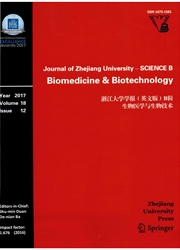

 中文摘要:
中文摘要:
经由 photoperiod-thermo 的一个较普通活字大一倍的繁殖系统的利用敏感男绝育在小麦(Triticum aestivum L.) 为混合生产有一个大潜力。337S 是新奇小麦男性对两短 daylength/low 温度和长 daylength/high 温度敏感的无菌的线。从在 337S 和五个普通小麦变化之间的十字导出的五张 F2 人口为基因分析被开发。当分离与在短 daylength/low 温度下面无菌的 3 fertile:1 的比率发生在 F2 人口时,所有 F1s 是高度肥沃的。在 337S 的男绝育被单个后退的基因控制,这被显示出,暂时指定了为 wptms3。Bulked segregant 分析(BSA ) 结合了简单顺序重复(SSR ) 标记被使用用一印射印射无菌的基因人口。wptms3 基因被 Xgwm413 和 Xgwm182 分别地在 3.2 和 23.5 厘米的基因距离印射到染色体手臂 1BS 和 flanked。帮助标记的选择的精确性和效率被评估并且为在 F2 产生识别 wptms3 基因的同型结合的后退的男无菌的遗传型证明必要。
 英文摘要:
英文摘要:
Utilization of a two-line breeding system via photoperiod-thermo sensitive male sterility has a great potential for hybrid production in wheat (Triticum aestivum L.). 337S is a novel wheat male sterile line sensitive to both short daylength/Iow temperature and long daylength/high temperature. Five F2 populations derived from the crosses between 337S and five common wheat varieties were developed for genetic analysis. All Fl's were highly fertile while segregation occurred in the F2 populations with a ratio of 3 fertile:l sterile under short daylength/Iow temperature. It is shown that male sterility in 337S was controlled by a single recessive gene, temporarily designated as wptms3. Bulked segregant analysis (BSA) coupled with simple sequence repeat (SSR) markers was applied to map the sterile gene using one mapping population. The wptms3 gene was mapped to chromosome arm 1BS and flanked byXgwm413 and Xgwm182 at a genetic distance of 3.2 and 23.5 cM, respectively. The accuracy and efficiency of marker-assisted selection were evaluated and proved essential for identifying homozygous recessive male sterile genotypes of the wptms3 gene in F2 generation.
 同期刊论文项目
同期刊论文项目
 同项目期刊论文
同项目期刊论文
 期刊信息
期刊信息
